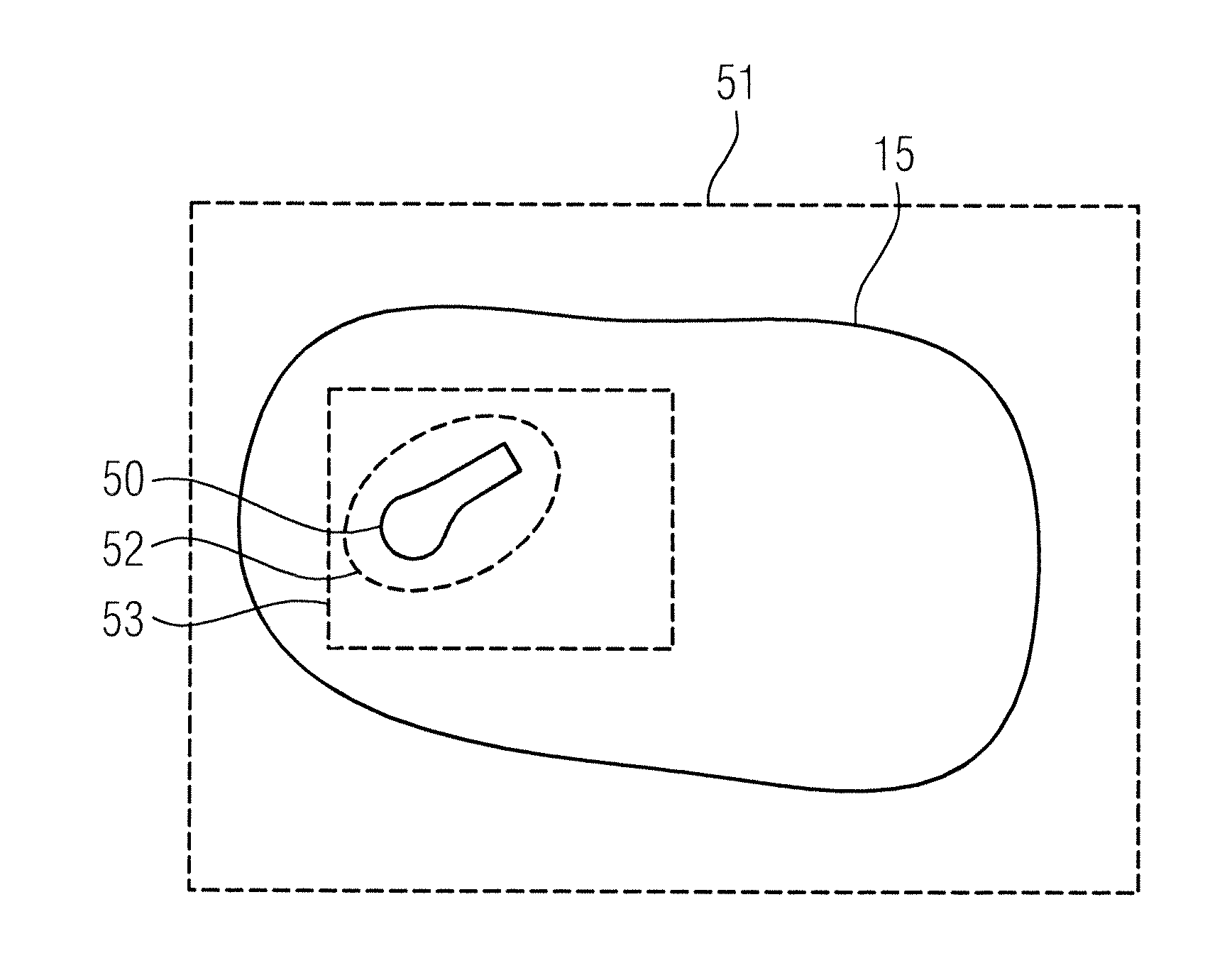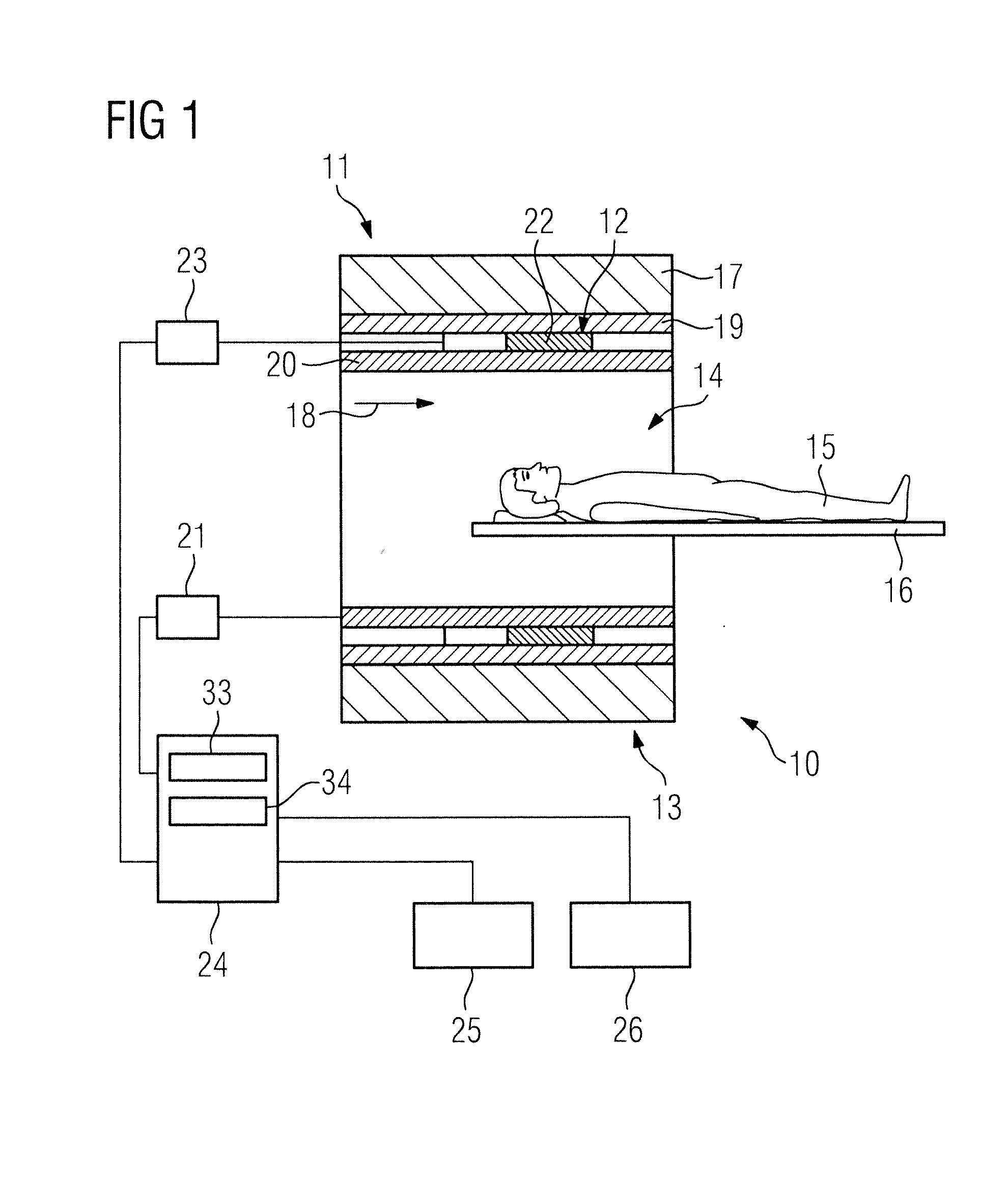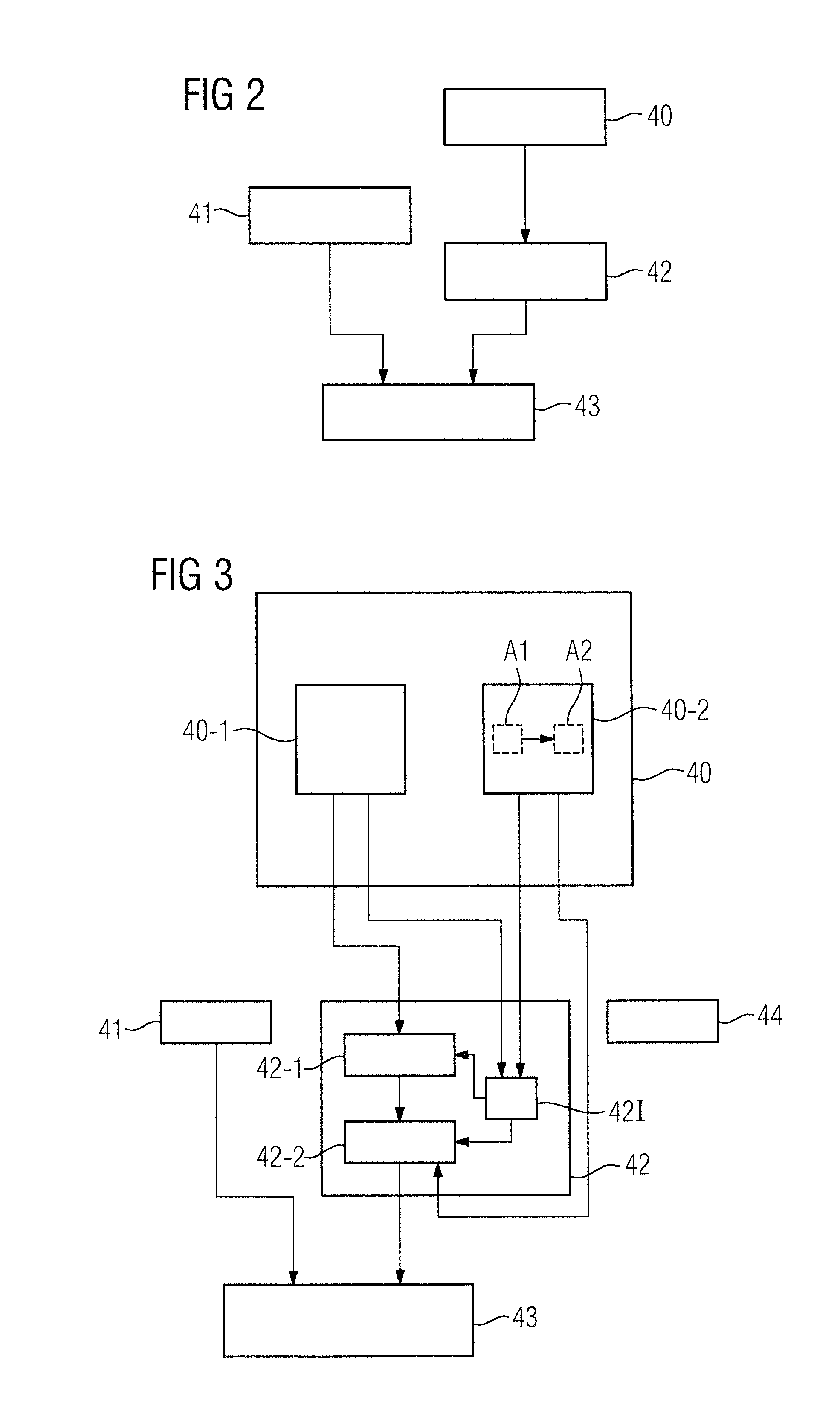Method and apparatus for attenuation correction of emission tomography scan data
a technology of emission tomography and attenuation correction, which is applied in the direction of instruments, magnetic measurements, and measurements using nmr, can solve the problems of inability to determine the suitable attenuation value of these signal changes, the inability to detect the signal cancellation in the magnetic resonance scan data, and the increase in susceptibility artifacts, etc., to achieve the effect of reducing artifacts, reducing the number of errors, and improving the resolution
- Summary
- Abstract
- Description
- Claims
- Application Information
AI Technical Summary
Benefits of technology
Problems solved by technology
Method used
Image
Examples
first embodiment
[0067]FIG. 2 shows a flowchart of an inventive method for attenuation correction of emission tomography scan data.
[0068]In a first method step 40 magnetic resonance scan data of the examination object are acquired by means of the magnetic resonance scan data acquisition scanner 11, wherein a magnetic resonance sequence, which is designed to at least partially compensate interference due to the magnetic interference field, is used to acquire the magnetic resonance scan data. The magnetic resonance sequence defines a sequence of control commands with which the magnetic resonance scan data acquisition scanner 11 acquires the magnetic resonance scan data.
[0069]In a further method step 41, emission tomography scan data of the examination object are acquired by means of the emission tomography scan data acquisition scanner 12. A simultaneous magnetic resonance emission tomography examination of the examination object 15 can be implemented by the magnetic resonance emission tomography appa...
second embodiment
[0072]FIG. 3 shows a flowchart of an inventive method for attenuation correction of emission tomography scan data.
[0073]The following description is essentially limited to the differences from the exemplary embodiment in FIG. 2, with reference being made in respect of unchanging method steps to the description of the exemplary embodiment in FIG. 2. Method steps that are essentially unchanging are basically numbered with the same reference characters.
[0074]The second embodiment of the inventive method shown in FIG. 3 includes method steps 40, 41, 42, 43 of the first embodiment of the inventive method according to FIG. 2. In addition, the second embodiment of the inventive method shown in FIG. 3 has additional method steps and substeps. A method sequence alternative to FIG. 3, which has only some of the additional method steps and / or substeps in FIG. 2, is also conceivable. Of course a method sequence alternative to FIG. 3 can also have additional method steps and / or substeps.
[0075]In...
PUM
 Login to View More
Login to View More Abstract
Description
Claims
Application Information
 Login to View More
Login to View More - R&D
- Intellectual Property
- Life Sciences
- Materials
- Tech Scout
- Unparalleled Data Quality
- Higher Quality Content
- 60% Fewer Hallucinations
Browse by: Latest US Patents, China's latest patents, Technical Efficacy Thesaurus, Application Domain, Technology Topic, Popular Technical Reports.
© 2025 PatSnap. All rights reserved.Legal|Privacy policy|Modern Slavery Act Transparency Statement|Sitemap|About US| Contact US: help@patsnap.com



